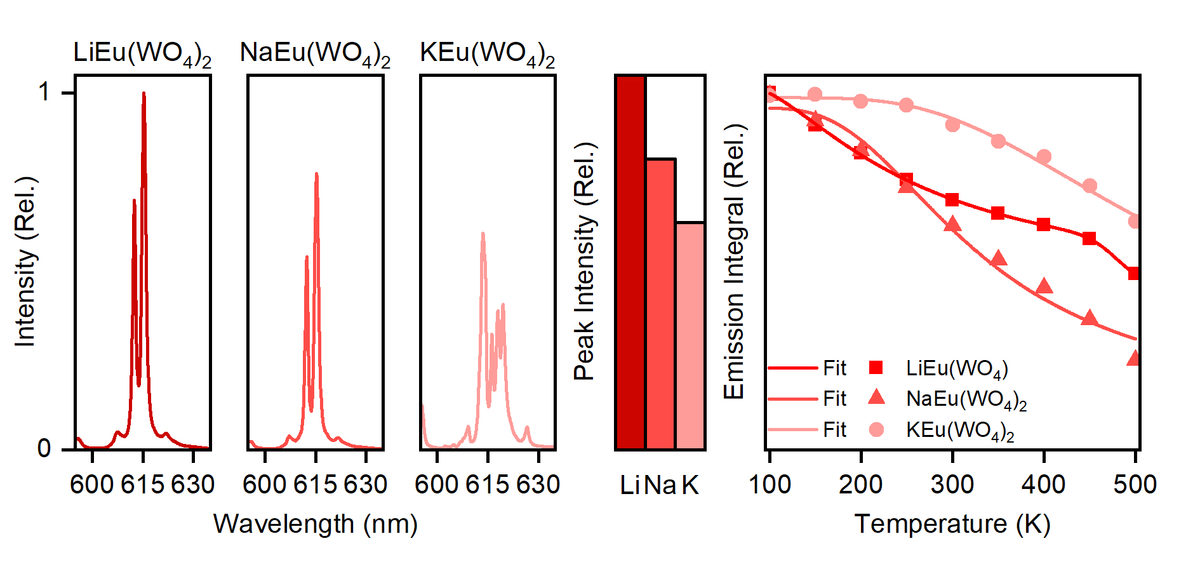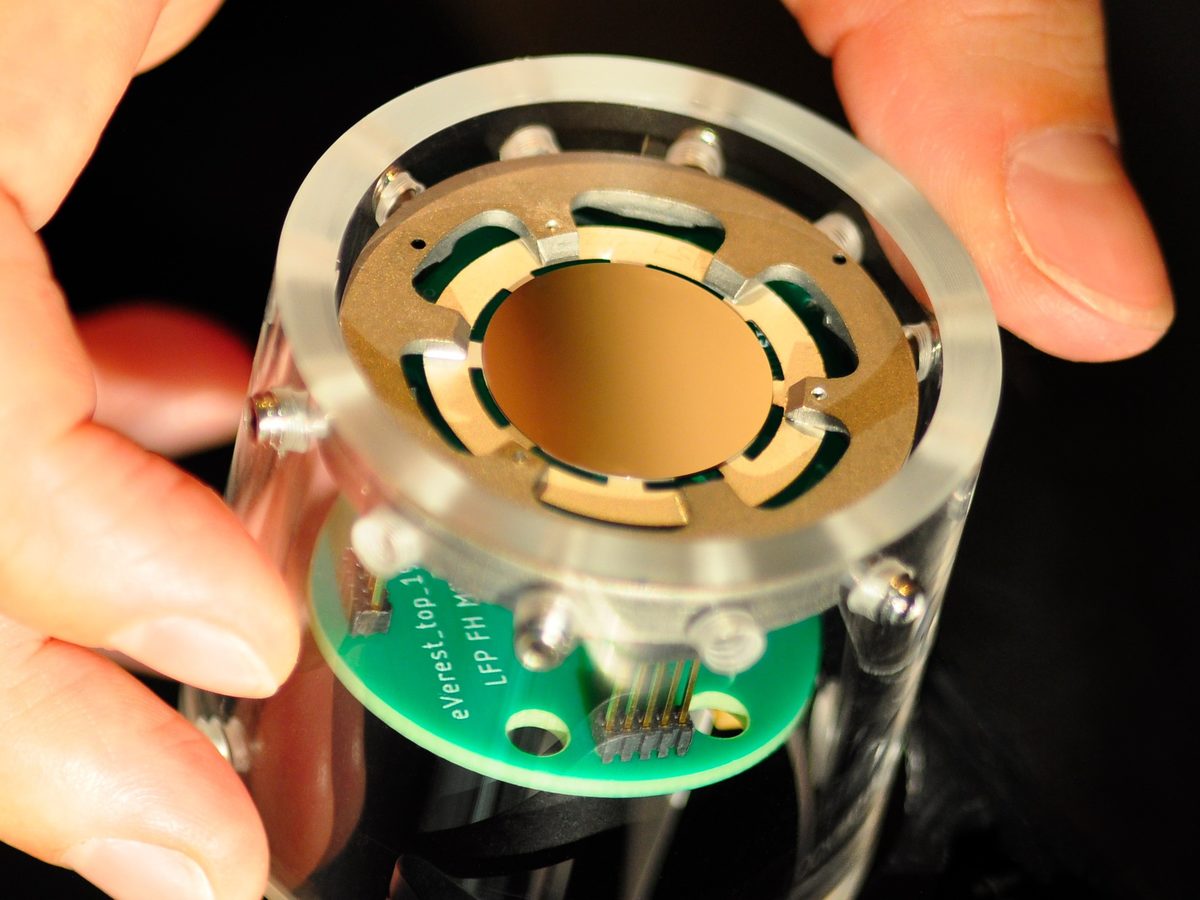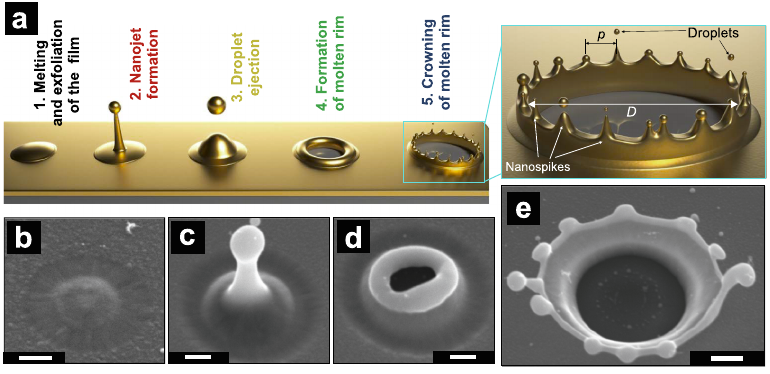- Emerging Laser Technologies for Precise Fabrication of Multifunctional Nanomaterials and Nanostructures
- Fluorescence Imaging with Chemical Sensors
- Application of tungstates in solid state lighting
- Theranostics with rare earth-doped LuPO4 nanoparticles
- New reference book: Applied Inorganic Chemistry (December 2022)
- Editor's Pick: Fast focus-shifter based on a unimorph deformable mirror
- Laser-induced nanocrowns improve detection limits of Raman spectroscopy
- Monitoring the corrosion of concrete structures with optical pH sensors
Emerging Laser Technologies for Precise Fabrication of Multifunctional Nanomaterials and Nanostructures
Lasers are used for material processing for more than 50 years: the first laser cutting of a 1-mm thick metal plate was demonstrated already in 1967. Since that the laser processing was scaled up and down: it can be used as well for welding of large cruise ships as for making micro- and nanostructures. The latter is especially challenging because the wave nature of light restricts the minimum feature size achievable with the laser light and the absorption coefficient of the material restricts the interaction efficiency between the light and the surface. However, these processes can be facilitated if laser-induced chemical reactions are involved in the patterning. The interplay between optical and chemical mechanisms upon laser patterning and their applications for surface processing are analyzed in a recent review paper published in Applied Functional Materials:
Alina A. Manshina, Ilya I. Tumkin, Evgeniia M. Khairullina, Mizue Mizoshiri, Andreas Ostendorf, Sergei A. Kulinich, Sergey Makarov, Aleksandr A. Kuchmizhak, Evgeny L. Gurevich: The Second Laser Revolution in Chemistry: Emerging Laser Technologies for Precise Fabrication of Multifunctional Nanomaterials and Nanostructures, Applied Functional Materials 2405457 (2024), doi: 10.1002/adfm.202405457
Fluorescence Imaging with Chemical Sensors
Imaging methods by the means of optical sensors are applied in diverse scientific areas such as medical research and diagnostics, aerodynamics, environmental analysis, or marine research. Prof. Dr. Michael Schäferling and Dr. Vladimir Ondrus from the Laboratory of Photonic Materials give a general introduction to the field. The covered topics include planar sensors (optrodes), nanoprobes, and sensitive coatings. Advanced sensor materials combined with imaging technologies enable the visualization of parameters which exhibit no intrinsic color or fluorescence, such as oxygen, pH, CO2, H2O2, Ca2+, or temperature. The progress on the development of multiple sensors and methods for referenced signal read out is also highlighted, as is the recent progress in device design and application formats using model systems in the lab or methods for measurements' in the field.
M. Schäferling, V. Ondrus: The Art of Fluorescence Imaging with Chemical Sensors: The Next Decade 2012-2022. Chemosensors 12 (2024), 31, DOI: 10.3390/chemosensors12030031
Application of tungstates in solid state lighting
Inorganic high-performance materials are a central part of the light generation chain of modern solid-state lighting devices. In addition to chips based on III/V semiconductors, modern light-emitting diodes (LEDs) contain an application-specific mixture of phosphors. These act as conversion materials, i.e. they are used to convert the output radiation into a desired line spectrum.
Europium-activated tungstates, a class of materials structurally characterized by [WO4] or [WO6] units, show promising optical properties. Among other things, tungstates allow a high activator concentration, show a low degree of thermal quenching and offer the possibility of intrinsic sensitization of activators. This makes them particularly interesting as potential converter materials for the red spectral range.
T. Pier, T. Jüstel: Application of Eu(III) activated tungstates in solid state lighting, Opt. Mater. X 22 (2024) 100299, DOI: https://doi.org/10.1016/j.omx.2024.100299
Theranostics with rare earth-doped LuPO4 nanoparticles
Theranostics is a generic term used in medicine and stands for the combination of therapy and diagnostics. During his doctorate, Jan Kappelhoff worked on an efficient method for radiotherapy and the visualization of nanoparticles.
For this purpose, Pr3+ and Nd3+ co-doped nanoscale LuPO4 particles were synthesized and the emitted UV-C radiation spectrum was characterized and optimized. By using the nanoparticles in the A549 lung cancer cell line, it was shown that a higher inactivation rate of the cancer cells was achieved in combination with 4 Gy irradiation than with irradiation alone.
In addition, Eu3+-doped nanoscale LuPO4 particles show a very interesting emission pattern for use in diagnostics. Due to the Lu3+ position and the substitution by Eu3+, this material emits with an emission maximum at 696 nm. This is a "transparent optical window" for the skin. In experiments, the nanoparticles were incubated in A549 cancer cells and could be successfully visualized using a UV-A excitation source.
Thao Tran, Jan Kappelhoff, Thomas Jüstel, Rox Anderson, and Martin Purschke "UV emitting nanoparticles enhance the effect of ionizing radiation in 3D lung cancer spheroids" International Journal of Radiation Biology 98(86) 1-34 (2022), DOI:10.1080/09553002.2022.2027541
New reference book: Applied Inorganic Chemistry (December 2022)
The present book consists of three volumes and is written by experienced authors who give a comprehensive overview on the many chemical and physico-chemical aspects related to application of inorganic compounds and materials in order to introduce senior undergraduate and postgraduate students (chemists, physicists, materials scientists, engineers) into this broad field.
Editors: Rainer Pöttgen, Thomas Jüstel, and Cristian A. Strassert
Release date: 5th December, 2022, first edition, doi: 10.1515/9783110733143
See detailed press release on this subject (only available in German language)
Editor's Pick: Fast focus-shifter based on a unimorph deformable mirror
To be selected as "Editor's Pick" by the Editorial Office of the Optical Society of America (OSA) adds value to a publication and is quite a honorable award for the authors. Editor's Picks serve to highlight articles with excellent scientific quality and are representative of the work taking place in a specific field. Our recent publication on a unimorph deformable mirror in Applied Optics was selected as Editor's Pick.
On-the-fly remote laser processing plays an increasingly important role in modern fabrication techniques. These processes require guiding of the focus of a laser beam along the contours of the workpiece in three dimensions. State-of-the-art galvanometer scanners already provide highly dynamic and precise transverse x—y beam steering. However, longitudinal focus shifting ("z-shifting") relying on conventional optics is restricted to a bandwidth of a few hundred Hz. We have developed and manufactured a fast piezo-based z-shifting mirror with diffraction-limited surface fidelity providing a focus shift of > 60mm with an actuation rate of 2 kHz.
S. Verpoort, M. Bittner and U. Wittrock: Fast focus-shifter based on a unimorph deformable mirror, Appl. Opt. 59, 6959-6965 (2020), doi: 10.1364/AO.397495 | ✔ Editor's Pick
Laser-induced nanocrowns improve detection limits of Raman spectroscopy
Applications and physical formation mechanisms of metallic crown-like nano-patterns were studied in a collaborative research paper recently published together with the Far Eastern Federal University in Vladivostok, Russia, in Applied Surface Science. Metal nanocrowns appear upon nanosecond laser patterning of thin metal layers deposited on a glass or silicon substrates. They are formed due to Rayleigh-Plateau hydrodynamic instability in the molten metallic rim around the laser-induced crater. Such structures can be used to increase the detection sensitivity of Raman spectroscopy.
D.V. Pavlov, S.O. Gurbatov, S.I. Kudryashov, E.L. Gurevich, A.A. Kuchmizhak: Laser-induced surface relief nanocrowns as a manifestation of nanoscale Rayleigh-Plateau hydrodynamic instability, Appl. Surf. Sci. 511, 145463 (2020), doi: 10.1016/j.apsusc.2020.145463
Monitoring the corrosion of concrete structures with optical pH sensors
The carbonation of reinforced concrete leads to undesirable material damage by the corrosion of the steel beams due to the impact of CO2 and the associated drop in pH. A pH value below 11.5 indicates the occurrence of carbonation and consequential damage. Prof. Schäferling from the Laboratory for Photonic Materials has developed in cooperation with the Federal Institute for Materials Research and Testing (BAM) a fiber-optic sensor for non-destructive monitoring of the pH in concrete which is now studied in test specimens with regard to long-term functionality.
J. Bartelmess, D. Zimmek, M. Bartholmai, C. Strangfeld, M. Schäferling: Fibre optic ratiometric fluorescence pH sensor for monitoring corrosion in concrete, Analyst (2020), doi: 10.1039/C9AN02348H










